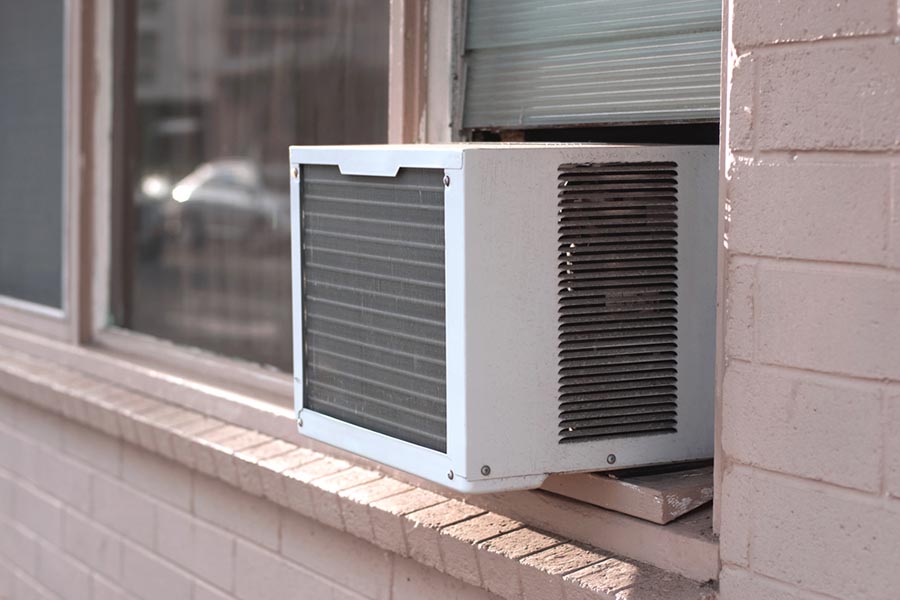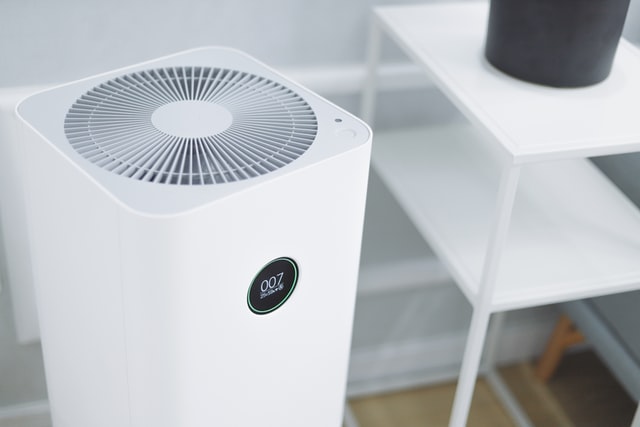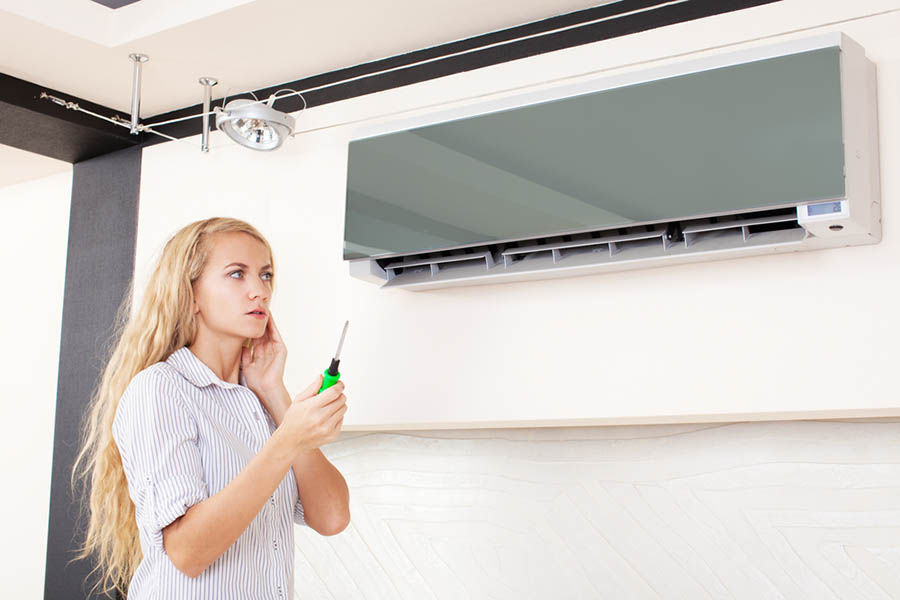The important points
- There are several types of air conditioners, each better suited to different homes and needs.
- The cooling capacity of an air conditioner is measured in British Thermal Units (BTUs).
- Portable air conditioners are easier to add to your home than wall- or window-mounted units, but may be less efficient.
How much power do you need from your air conditioner?
Before buying an air conditioner for your home or apartment, it’s important to determine how much cooling power you’ll need. Cooling capacity is measured in British Thermal Units (BTUs), which indicate how much heat a unit can remove from your space.
To estimate the right BTU rating, consider the size of the area you want to cool, ceiling height, insulation, sun exposure, and how many people typically occupy the room. For example, a small bedroom may need a 5,000–6,500 BTU unit, while a larger living area could require 10,000 BTUs or more. If your room is very sunny, add 10% to the recommended BTU; if it’s heavily shaded, subtract 10%. For each additional person beyond two, add 600 BTUs. If the unit will be used in a kitchen, add 4,000 BTUs.
A BTU calculator can help you determine the appropriate capacity for your space. Choosing the right size ensures efficient cooling and helps avoid wasted energy or poor humidity control.
When selecting an air-conditioning system, there are four main types to consider. Below, we outline the pros and cons of each to help you decide which is best for your home.
Window air-conditioners

Window air conditioners are a popular and cost-effective choice for cooling single rooms or small spaces. Designed to fit into a window, these units contain all the necessary components—compressor, condenser, expansion valve, and more—in one package. Some models are made specifically for casement windows that swing open from the side.
Window units are generally affordable and offer good cooling power for their size. They’re also relatively easy to install and don’t require permanent modifications to your home, making them ideal for tenants. However, you’ll need to seal any gaps around the unit to prevent air leaks and maintain efficiency.
One advantage is portability: you can remove the unit and take it with you if you move. Keep in mind that window air conditioners may take longer to cool rooms with open layouts or multiple connected spaces, and they need to be removed or covered during the winter months in colder climates.
Portable air-conditioners

Portable air conditioners offer flexibility and are easy to set up, making them a good option for renters or spaces where window or wall units aren’t practical. These units sit on the floor and use a hose to vent hot air out a nearby window. An adjustable frame helps seal the window opening around the hose.
While portable units can be moved from room to room, they tend to be bulkier and take up valuable floor space. They are typically heavier and can be difficult to roll on carpeted surfaces. Portable air conditioners are generally less efficient and noisier than window or wall units, and they often use more energy for the same cooling output.
Dual-hose models are more efficient than single-hose versions, as they use outside air to cool the unit, but they are also more expensive. Regardless of type, portable units don’t require permanent installation or wall modifications, which is helpful for renters. Be aware that you may need to empty a water collection tray or tank, depending on the model.





